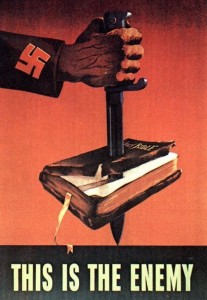The Final Solution
For this creative response I was inspired by the shocking images and sentiments expressed in Jo Johnson’s piece on “Radical Thinking” and in the documentary “The Final Solution” made by Rakesh Sharma, both concerning the riots and massacres that took place in Gujarat in 2002. Johnson and Sharma illustrate a time in India’s history where pure and systematic hatred for a particular religion, was displayed through horrific acts of violence, and what some to be consider genocide against Gujarat Muslims. More than an outbreak among only the region’s citizens, the violence was overlooked and even encouraged by the party leadership at the time, coming from the newly elected BJP member Narendra Modi. As Sharma uncovers in his documentary, Gujarati Hindus’ unrest was being fueled by this nationalistic government, spreading ultra-traditional Hindu messages coming from the re-emergence of stories of Ram and great Hindu power, and at the same time pointing towards the Muslims still residing in India as the sole blame for all of the nation’s troubles. As Johnson alludes to, and Sharma makes blatantly obvious through the title of his work, such trends of scapegoating and targeting a religious minority are eerily similar to the horrific actions performed by the Nazi party during the Holocaust.
In pondering these similarities, my mind jumped from the images of violence and the anti-Islam public rallies that flash across the screen in “The Final Solution”, back to images I had seen of high ranking Nazi party members making speeches, and spreading propaganda with anti-Semitic messages. Keeping with this theme I wanted to compare through art the frightening similarities between the events in Gujarat in 2002 and that in Germany and throughout Eastern Europe in the 1930s and 40s. Nazi war posters were a large part of the propaganda campaign that helped spread anti-Jewish sentiments, and interestingly once the U.S. got involved in the war we used similar posters depicting the horror of the Nazi’s to get Americans attention and raise support for the war effort. I chose a historic poster that I thought related most to the events in Gujarat. It was a drawing of a Nazi soldier’s hand grasping a knife that had cut into the Bible. Below the stark image was a message that stated “This is the enemy”.
I applied this image to the conflict in India by using the same hand, this time of a Hindu nationalist grasping a traditional sword that Sharma documents fighters using, and this time the sword is cutting through a Holy Quran, with the phrase “Gaurav Yatra” written across the top. The phrase “this is the enemy” from the WWII poster applies in two different ways in connection with “Gaurav Yatra” in my drawing. First, to the Hindu’s and nationalist politicians whose hand is represented, the enemy and cause for Guarav Yatra are the Muslims. Added as a quiet detail to the jacket on the arm is a button with the initials N M for Narendra Modi, as many believe, though he was never convicted of sponsoring the violence. So in one way this image could be seen as a symbol for the sentiments of many Hindus during this time. Secondly though, the “this is the enemy” can represent the hand grasping the sword, as the rest of the world should have been aware of the atrocities that were happening in India during this time, but many as they did also in the early years of the holocaust turned a blind eye. Perhaps if other nations and international organizations could have seen the Gujarat riots for what they were, as is depicted in the drawing, more could have been done to ease conflict and punish those who supported the violence.

